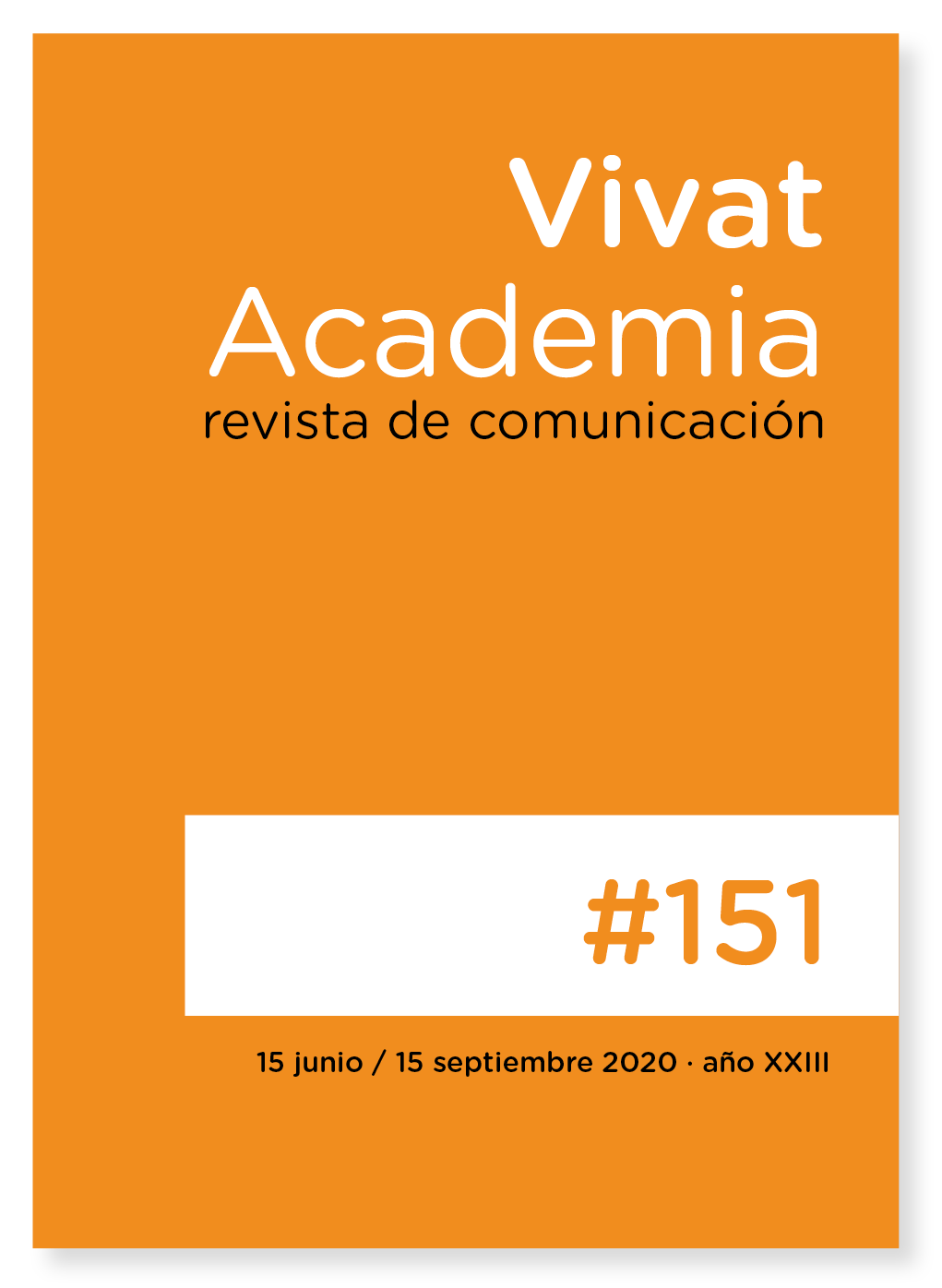Video art as a methodological tool and creative catalyst The acquisition of competences in media literacy with the help of emotions
Main Article Content
Abstract
This research arises from the need to provide society with useful tools for the media literacy of individuals in a world flooded by audiovisual technologies. In addition, it is necessary to have an educational system that evolves in parallel to the changes that originate outside of it and for it, among others, it is necessary to resort to those languages that students use, in order to encourage motivation, But without forgetting the need to educate them with a critical attitude where they reflect and question themselves. From the teaching practice, developed into two workshops With secondary school students from an IES in Madrid and an IES in Murcia with high-ability students, based on a comparative research (quantitative and qualitative), we will analyze the results of an educational methodology of media competencies through video art, with the purpose of encouraging other teachers to use media literacy in their classroom. This literacy is governed by the semantic structure of the audiovisual for its inclusion in the school curriculum in a transversal way. The teacher will be able to adapt to his programming all those aspects that the audiovisual contributes to the construction of critical thinking.
Downloads
Article Details
References
Acaso, M. (2015). rEDUvolution. Hacer la revolución en la educación. Barcelona: Ediciones Paidós Ibérica.
Álvarez-Gayou Jurgenson, J. L. (2003). Cómo hacer investigación cualitativa, fundamentos y metodología. México D.F.: Editorial Paidós Mexicana S.A.
Andréu, Abela J.; García-Nieto Gómez Guillamón. A. y Pérez Corbacho, A. M. (2007). Evolución de la teoría fundamentada como técnica de análisis cualitativo. Centro de Investigaciones Sociológicas.
Ausubel, D. (1963). The Psychology of Meaningful Verbal Learning. New York: Grune y Stratton.
Ausubel, D., Novak, D. y Hanesian, H. (1978). Educational Psychology: A Cognitive View. New York: Holt, Rinehart y Winston.
Bokas, A. y Rock., R. (2015). Cambiar el modo de pensar de educación: cada alumno es único. https://www.gettingsmart.com/2015/05/changing-the-mindset-of-education-every-learner-is-unique/
Bonet, E. (1987). Metavideo. Del estado del video, su historia y estética. En La Imagen Sublime (catálogo). Madrid: Ed. Ministerio de Cultura (Museo Centro de Arte Reina Sofía).
Brown, G. y Atkins, M. (1988). Effective teaching in Higher Education. Londres: Ed. Routledge.
Casado Alvarado, M. (2000). La creación de video experimental como material didáctico en la licenciatura de Comunicación. México: Universidad Autónoma del Estado de México.
Galaup, L. (2017, 18/10/2017). Educación pone en marcha su plan para adoctrinar a los alumnos sobre el himno, la bandera y la defensa de España, Digital. eldiario.es. Recuperado de https://www.eldiario.es/sociedad/Educacion-bandera-defender-Espana-materia_0_698530885.html
García Roldán, Á. (2012). Videoarte en contextos educativos. Las nuevas narrativas audiovisuales y su inclusión curricular en los programas de educación artística desde una perspectiva a/r/t/ográfica. (Científica). Granada: Universidad de Granada. Recuperado de www.videoarteencontextoseducativos.es
García-Ruiz, R., Ramírez-García, A. y Rodríguez-Rosell, M. (2014). Educación en alfabetización mediática para una nueva ciudadanía prosumidora. Comunicar, (43), 15-23. https://doi.org/10.3916/C43-2014-01
Gavara de Cara, J. C. y Pérez Tornero, J. M. (2012). La alfabetización mediática y la Ley General de Comunicación Audiovisual en España (E. UOC Ed. 2012 ed.). Barcelona: UNESCO Institute for Inforation Technologies.
Goleman, D. (1995). Inteligencia emocional. Barcelona: Kairós.
Goleman, D. (1996). Inteligencia Emocional. Madrid: Kairós.
González García, F. M. (1992). Los mapas conceptuales de J. D. Novak como instrumentos para la investigación en didáctica de las ciencias experimentales. Enseñanza de las ciencias: revista de investigación y experiencias didácticas, 10(2), 148-158.
Gutiérrez, A. y Tyner, K. (2012). Educación para los medios, alfabetización mediática y competencia digital. Comunicar, XIX(38), 31-39. doi: http://dx.doi.org/10.3916/C38-2012-02-03
Huete, C. (2015). El día en que Bill Viola hizo deberes en un instituto. El País (versión online). Recuperado de https://elpais.com/cultura/2015/10/17/actualidad/1445111799_891044.html
Martínez Saiz, T. G. d. E. (2017). Diario de sesiones del Congreso de los Diputados. Madrid: Gobierno de España. Recuperado de http://www.congreso.es/public_oficiales/L12/CONG/DS/CO/DSCD-12-CO-347.pdf
Mirapeix, F. (2009). La educación y la escuela en los medios de comunicación. La educación y la escuela en los medios de comunicación. Cantabria.
Müller, M. S. (2012). Las representaciones de las prácticas educativas en el videoarte contemporáneo. (Tesis doctoral). UNSAM (Universidad Nacional de San Martín), Buenos Aires (Argentina).
Organización de las Naciones Unidas para la Educación, l. C. y. l. C. (Ed.) (2011). Alfabetización Mediática e Informacional, Curriculum para profesores. Place de Fontenoy, 75352 Paris 07 SP, France.
Pública, C. S. d. E. (2010). Guía de observación para la detección de necesidades educativas especiales, con o sin discapacidad, en niños de educación básica. Recuperado de http://www.conafe.gob.mx/educacioncomunitaria/programainclusioneducativa/guia-educacion-basica.pdf
Sandoval Romero, Y. y Aguaded Gómez J. I. (2012). Nuevas audiencias, nuevas responsabilidades. La competencia mediática en la era de la conver-gencia digital. Icono 14, 10(3), 8-22. doi: https://doi.org/10.7195/ri14.v10i3.197
Strauss, A. y Corbin, J. M. (1990). Basics of qualitative research: Grounded theory procedures and techniques. Newbury Park, CA.: Sage Publications, Inc.





